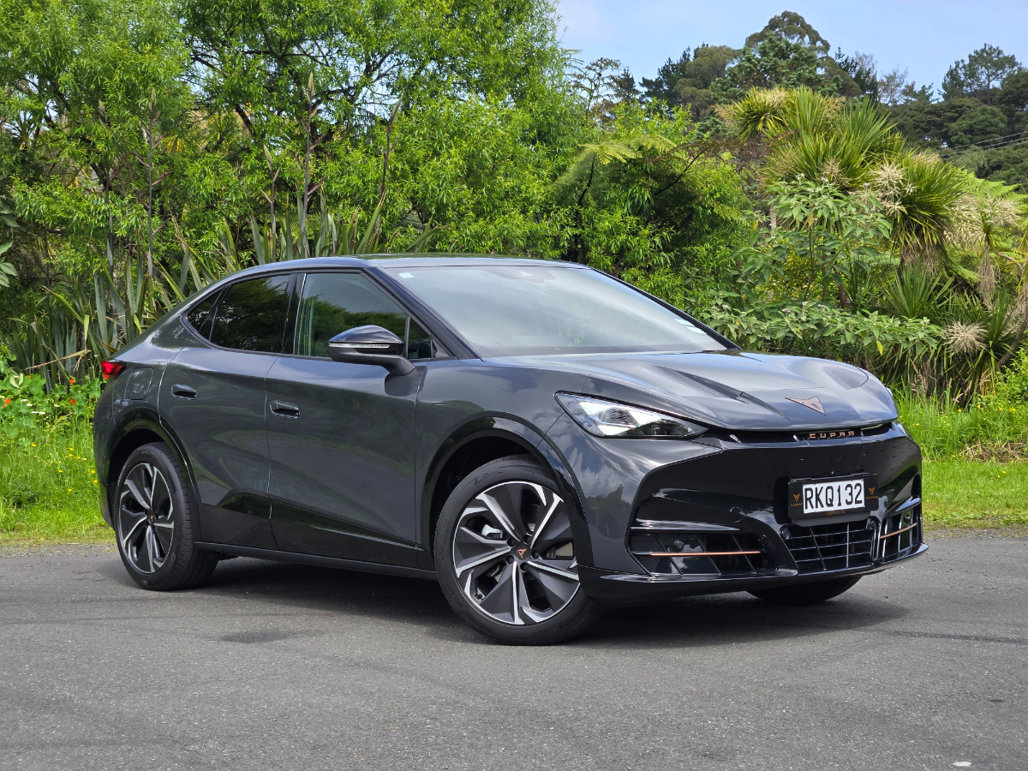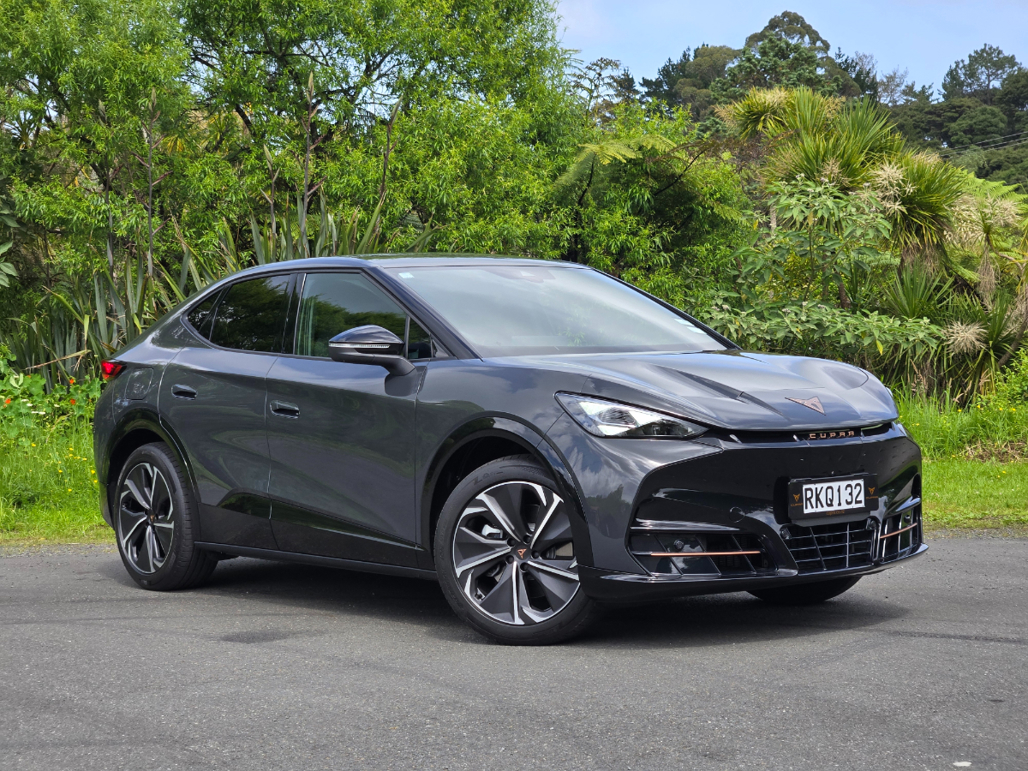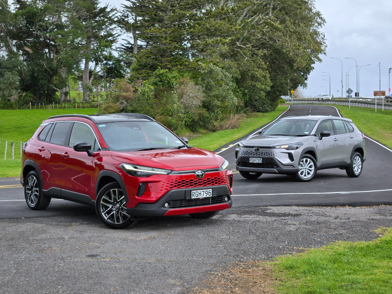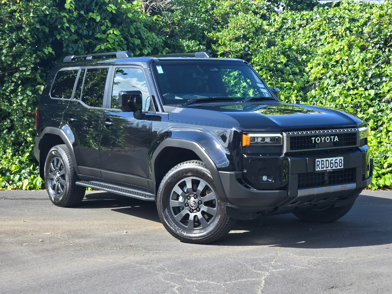What’s this new car all about then?
From a purely nuts-and-volts perspective, the Tavascan is Cupra’s version of a medium SUV-coupe on the ubiquitous Volkswagen Group MEB platform. Therefore, it’s a very close relation to the VW ID.5 or Skoda Enyaq Coupe: same basic electric vehicle (EV) “skateboard” underneath, same battery technology and electric motor setup.
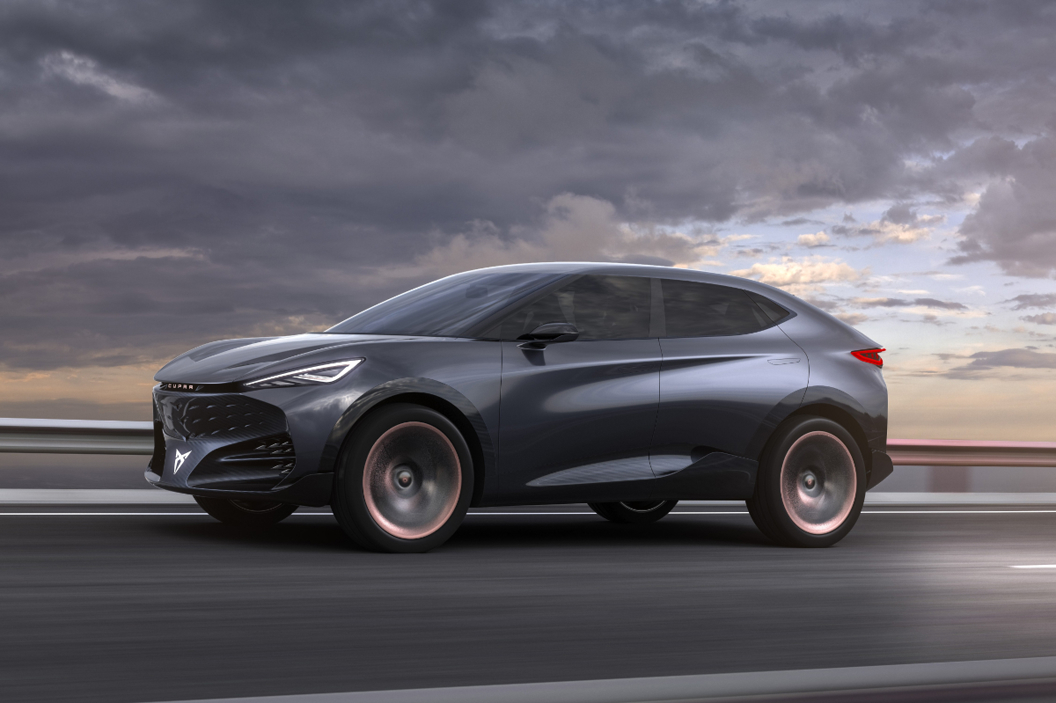
But Cupra would like you to think Tavascan is a bit special. And maybe it’s got a point.
“Concept car looks” is an overused phrase, but it’s fair to say Cupra followed through on the Tavascan show car from 2019 with the finished version in 2023: it’s clearly the same thing inside and out, all aggressive haunches and cool aero touches (including some you can’t see at first, like the little cutouts in the bonnet).
It’s even got a blingy illuminated Cupra badge on the bonnet, which is a first for Cupra; all the current models have the brand-logo lit up on the rear light bar already. Tavascan is going at both ends, so to speak.
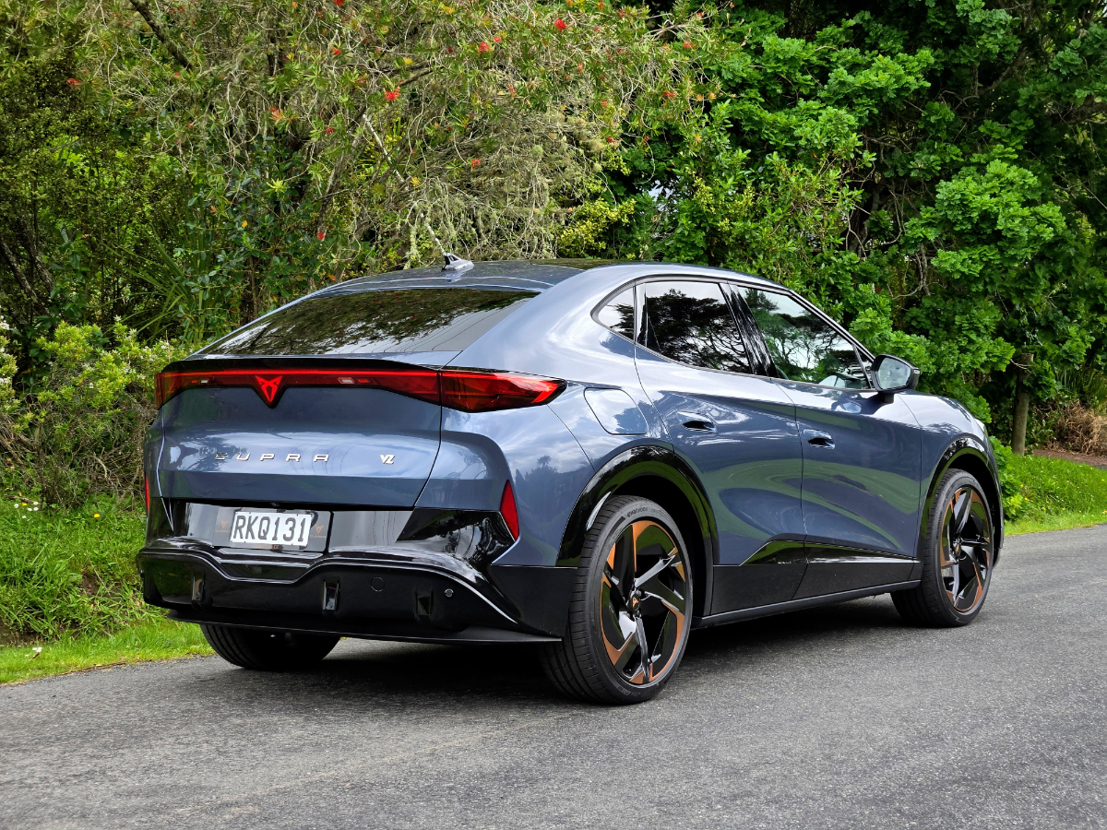
With the demise of the Born for the local market this year, Tavascan is Cupra’s sole pure-electric for New Zealand; at least until the supermini-sized Raval arrives next year. In fact, it’s representing for mainstream MEB SUVs in general right now, because you can’t currently buy a VW ID.4 or Skoda Enyaq; both are on a break in-between model updates and all that EV price-slashing unpleasantness that’s been happening. The only other models from the MEB family currently on sale here are the Audi Q4 e-tron and VW ID. Buzz.
'Concept car looks' is an overused phrase, but it’s fair to say Cupra followed through on the Tavascan show car from 2019.
EVs are still a bit of a hard sell at the moment, so Cupra NZ isn’t aiming for big volume. It says it’ll be happy with 20-40 sales per year for the Tavascan.
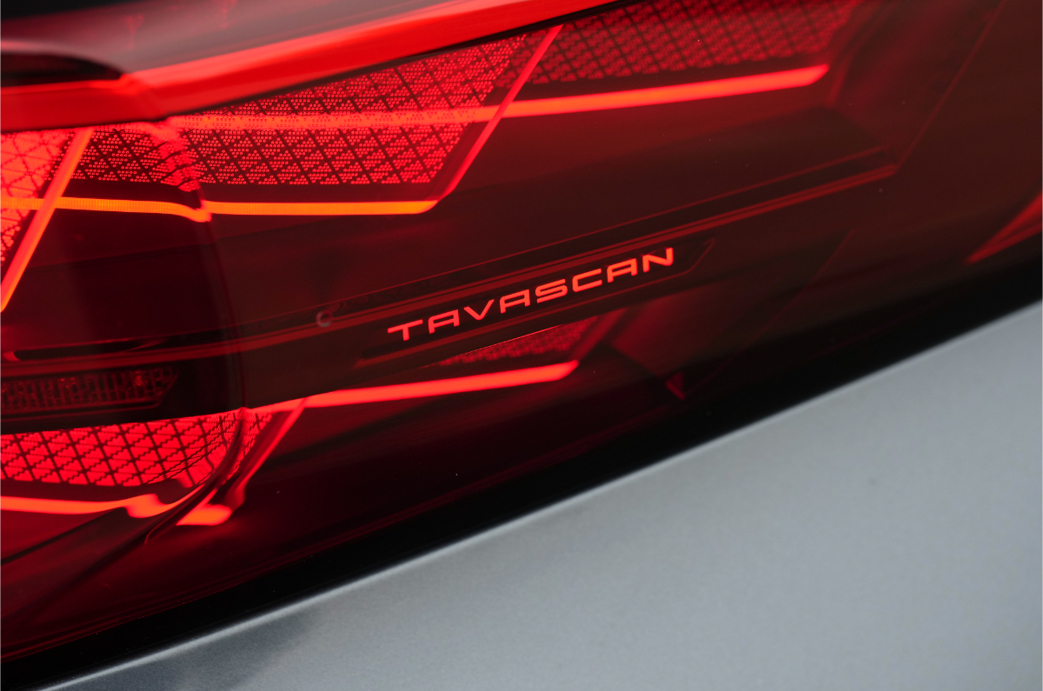
Right, so a couple of well-publicised elephants in the room for Tavascan. First is the 4-star ANCAP safety rating. Cupra national sales manager Clinton Baird says it’s “nothing we want to hide away from”, but also points out that the car achieved 89% in adult protection, 87% for child protection and 80% for pedestrian safety. The big hit came in safety assists, where the lack of speed camera recognition and intelligent speed assist knocked it down to 67%. Them’s the facts, do with them what you will.
This won’t shock you, but Tavascan is noticeably sharper and firmer than its platform pals from VW and Skoda. That’s the Cupra way.
And of course, the Tavascan is the first Cupra built in China. No big deal for most makers, but perhaps an issue for a niche brand that places so much stock in its European character.
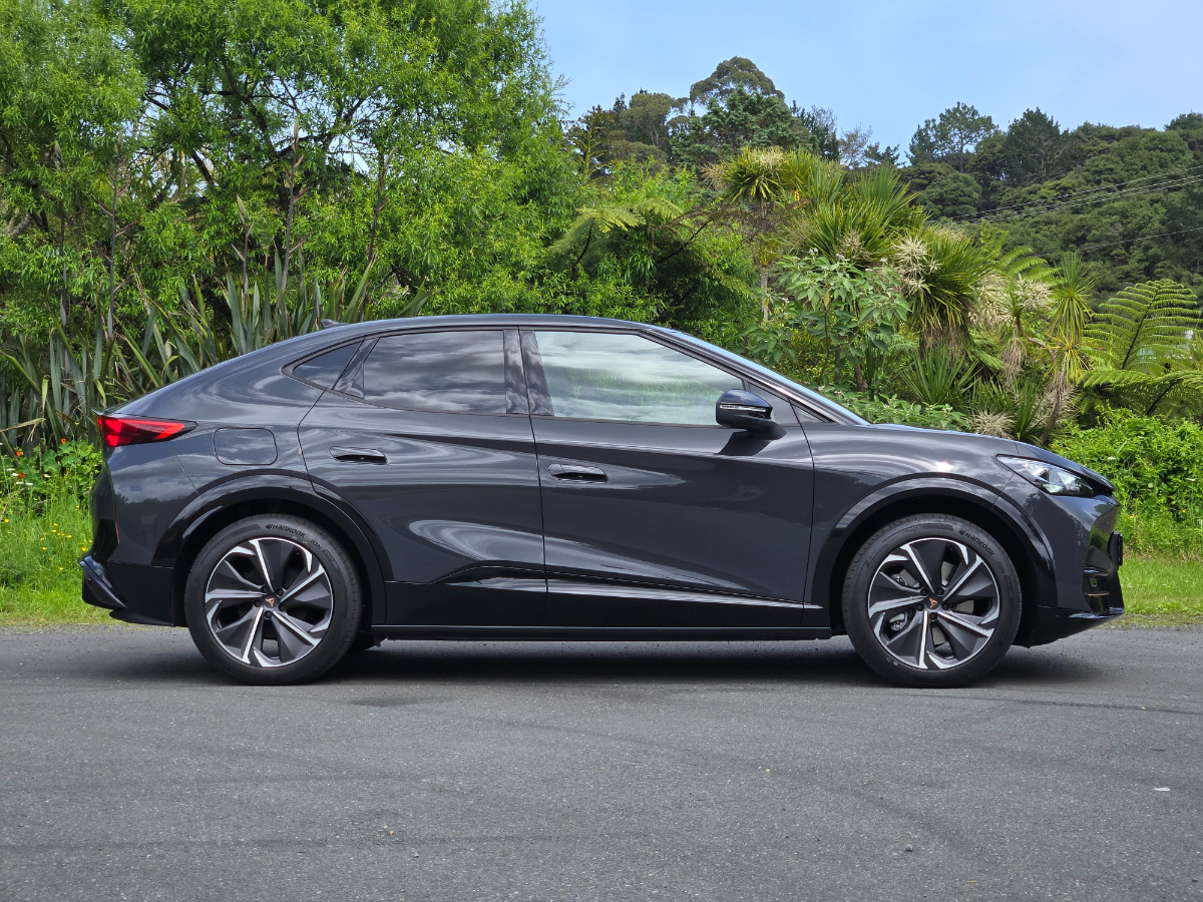
Again, no issue, argues Baird: “It’s made at the VW Group’s Anhui facility in China, which is a state-of-the-art innovation hub for mobility. We don’t shy away from the fact it’s made in China and we don’t think that’s an issue at all. Think about your Apple iPhone or a lot of other products, all manufactured in China.
If you’re ready to spend another $20k on the Tavascan VZ, give the V a try first is all we’re saying.
“But the [Tavascan] product, the design, the elements and the research all come from Europe and the Cupra factory”.
How much is it?
Cupra NZ is selling Tavascan in two models, the $84,900 V and $94,900 VZ. If you though they were $89,900 and $109,900, you weren't dreaming; Cupra NZ launched them at those prices, but an announcement came on November 4 that knocked $5k off the V and an impressive $15k off the VZ. It's thanks to some just-confirmed factory support, says the company.
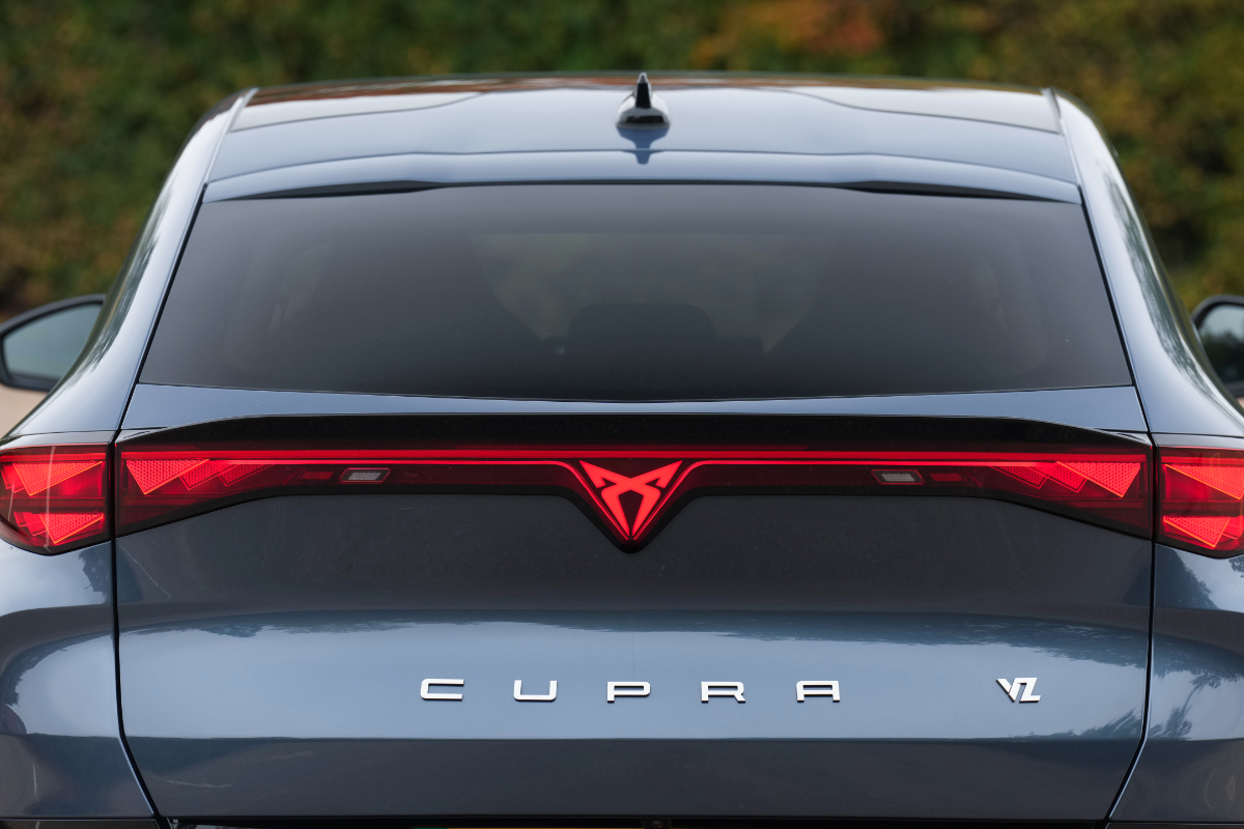
They both share the standard 77kWh (usable) battery, but the V is rear-drive with 210kW/545Nm, while the VZ adds a front motor for AWD and a total of 250kW/545Nm.
Aside from the AWD aspect, there’s actually not a huge amount between the two. The VZ is quicker with 0-100km/h in 5.6 seconds versus 6.8 for the V, but the V offers 534km range compared to 499km for the dual-motor model (both with a 135kW maximum charge rate). The V is also 89kg lighter.
The safety package is shared between the two, as is the basic cabin layout with 15-inch infotainment screen, Sennheiser premium audio (normally an option on lower-end Cupras) and 360-degree camera system.
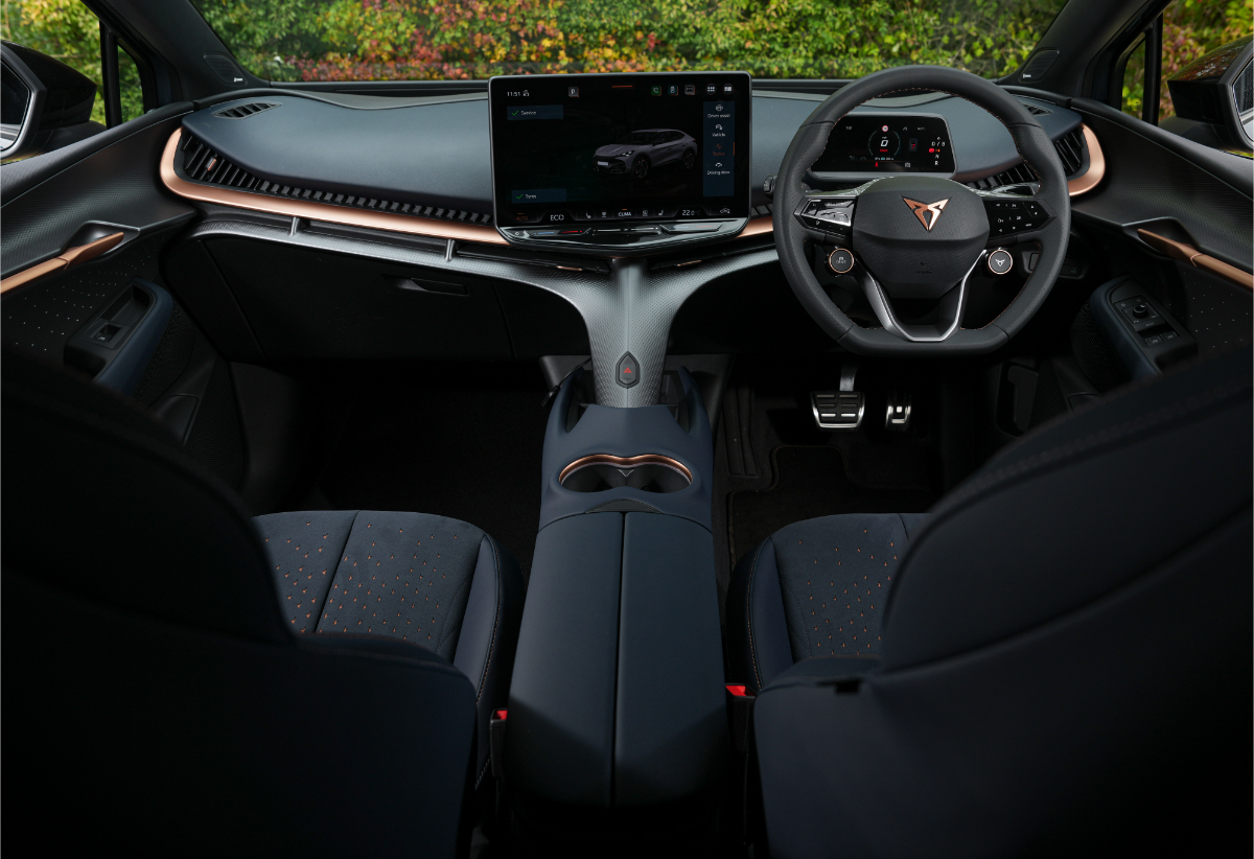
What you’re gaining with the VZ is a package of more, shall we say, serious stuff. It has dynamic chassis control (DCC) adaptive suspension, 21-inch copper-highlight wheels compared to the V’s black-and-silver 20in rims (no other wheel options offered), Matrix LED headlights with variable light distribution. Oh, and a bit of extra light/night sky from the fixed panoramic glass roof.
Tavascan is “sit to start”, meaning there’s no power button and once you plant yourself in the driver’s chair, the car’s alive and ready to go. Auto unlock and lock as you approach/leave the car, too.
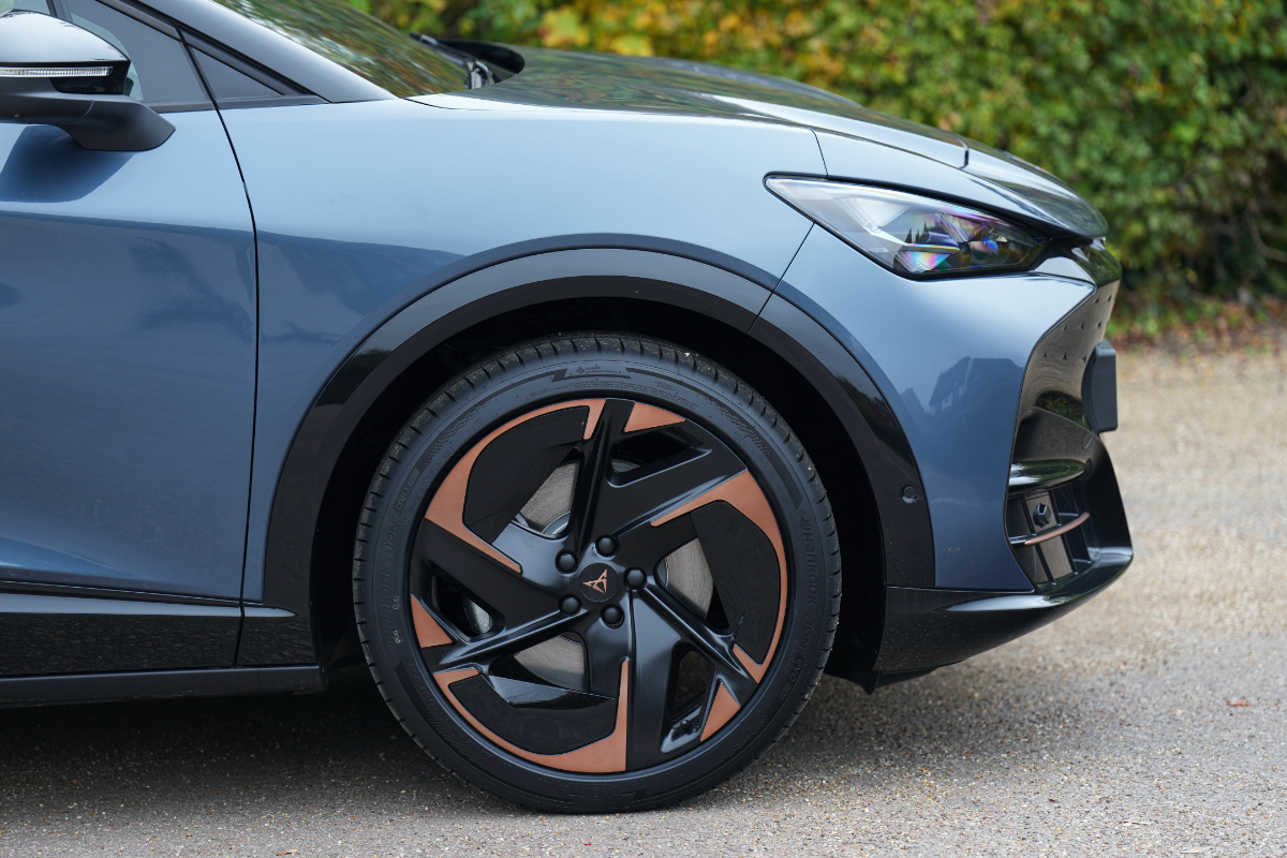
Let’s talk Cupra-colour. Basalt Grey is a new hue for Tavascan and the only one that comes as standard. Atacama Desert (a soft brown) and White Silver are both $1500 extra, while Tavascan Blue is classified as a “special colour” and adds $2500 to the price.
To come next year is Century Bronze Matte, as offered on Formentor and Terramar. You’ll need another $4000 for that.
What’s it like to drive?
This won’t shock you, but Tavascan is noticeably sharper and firmer than its platform pals from VW and Skoda. That’s the Cupra way and the Group’s Spanish arm has done a nice job of injecting extra driver appeal into Tavascan without eating into family-comfort credentials too much.
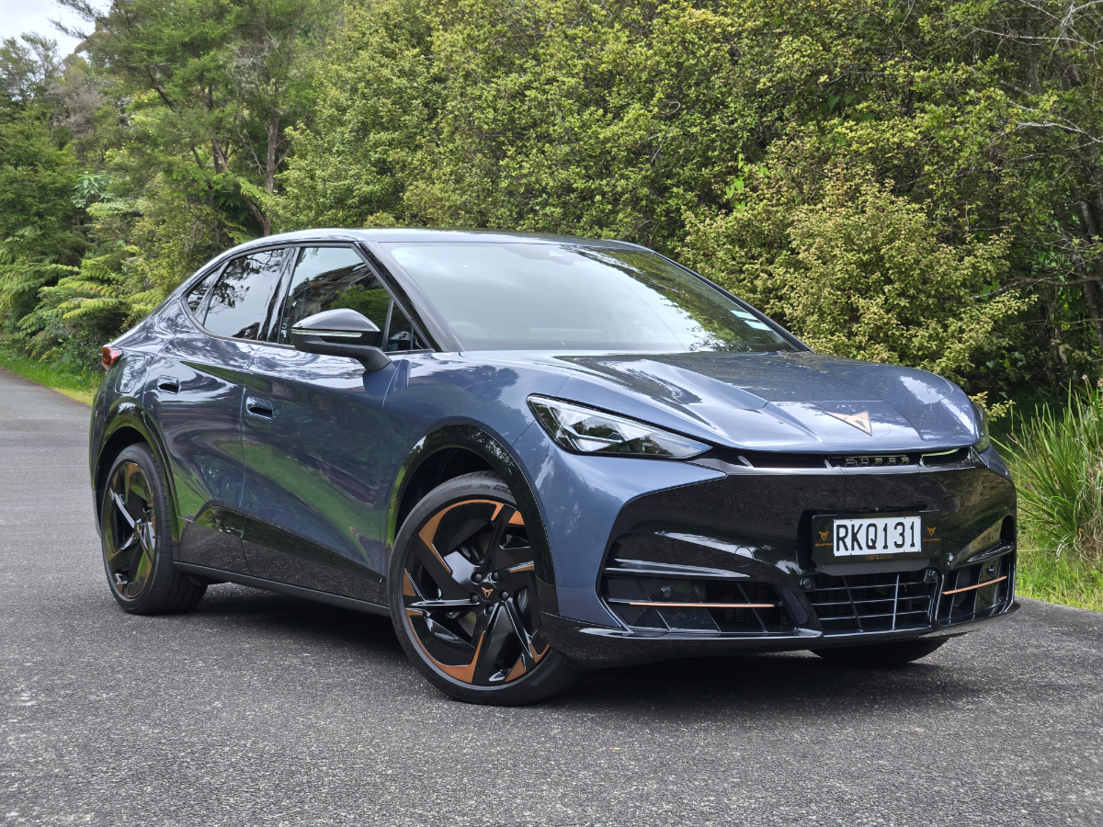
Progressive Steering is standard on both models and it’s very easy to switch between drive modes. There’s a selector to the left of the steering wheel boss that cycles though Comfort, Performance, Cupra and Individual - plus an additional Traction setting for the VZ, which makes it a bit more 4WD-focused for loose surfaces.
But there’s also a shortcut to Cupra mode on the right, configured to give you an instant awakening of the steering and powertrain in case you need to overtake. Or perhaps if a big hill takes you by surprise.
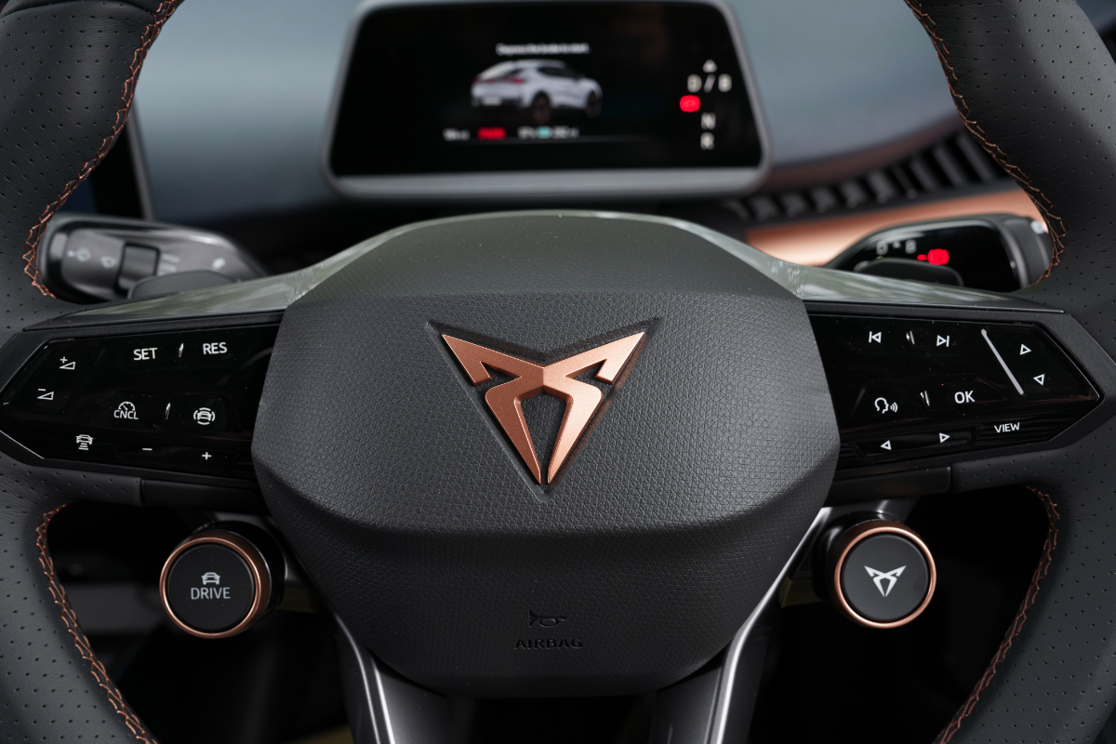
Tavascan is the first Cupra to have steering wheel-mounted paddles that allow you to adjust the regen; you can also do that by giving the gear selector another twist to go from D to B.
In general, this is a really well-resolved ride-handling package that’ll appeal to people who like driving, but also ensures the rest of the whanau will still be happy to come along on a road trip.
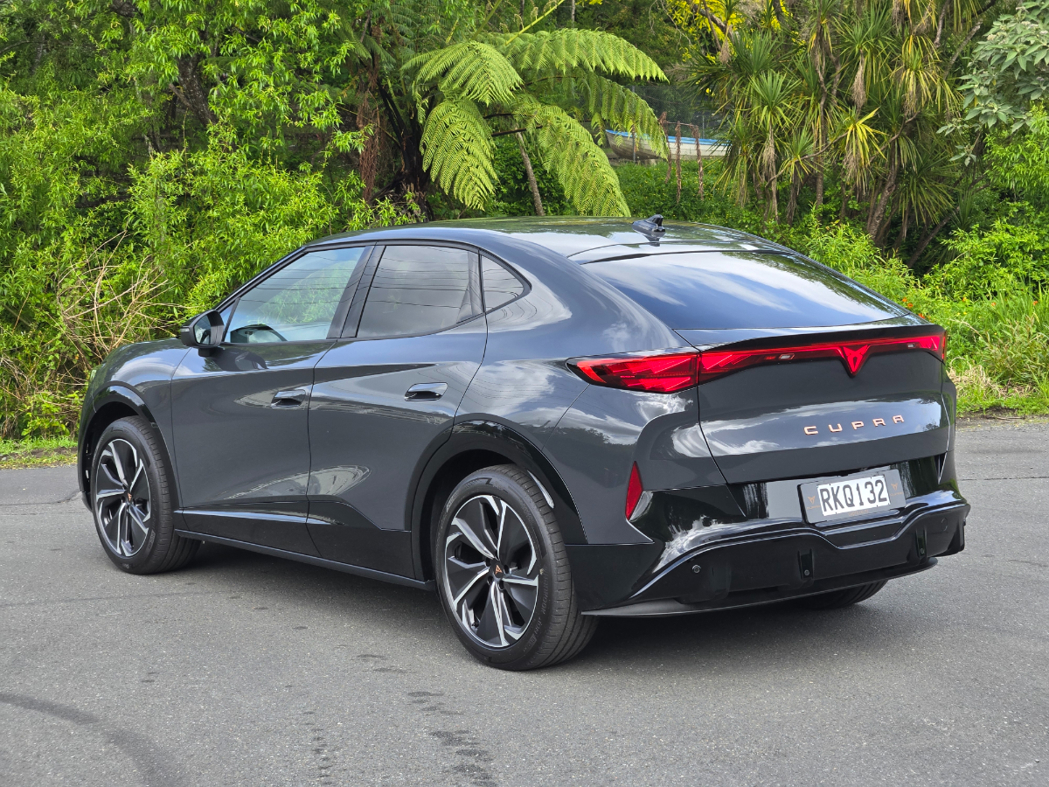
The only real disappointment is the spongy brake pedal, which seems to be a common theme across many MEB cars. You get used to it, but it’s not ideal - especially for something that’s supposed to be a bit sporty.
The cabin is a significant part of the driver appeal. You could argue it’s a bit over-the-top, with a silver “spine” extending from the centre console and lights everywhere, including the cupholders. But hey, it’s fun, very different to anything else (including Cupra’s own stuff) and executed with typically high quality materials.
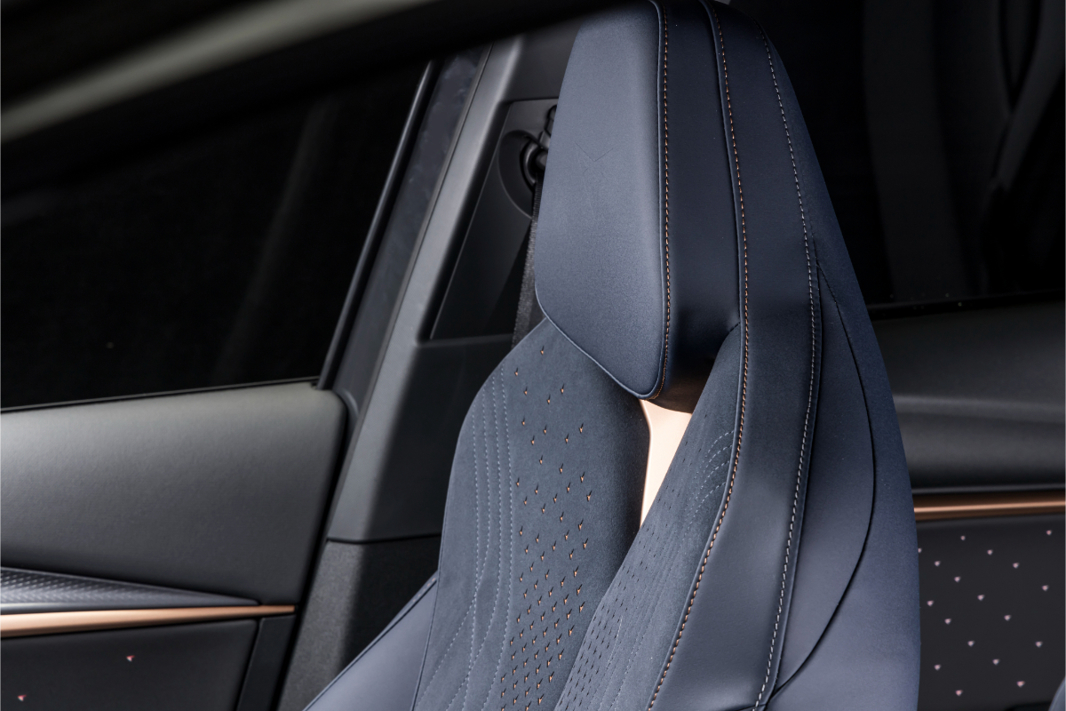
Speaking of: both models have front bucket seats with Dark Night deep blue microfibre upholstery including “sustainable content”. There’s no leather option, although that may come next year. We kinda like the cabin the way it is.
If you’re not keen on the haptic-touch steering wheel controls (as per VW’s somewhat-controversial ID models), they're being dropped next year as part of a model update, to be replaced by conventional buttons. But we’re not likely to see that configuration until later in 2026.
What’s the pick of the range?
Cupra reckons the top VZ will account for the bulk of sales, because that’s the way things have panned out with its other models. Once this newcomer is established, it foresees the VZ soaking up as much as 80% of volume.
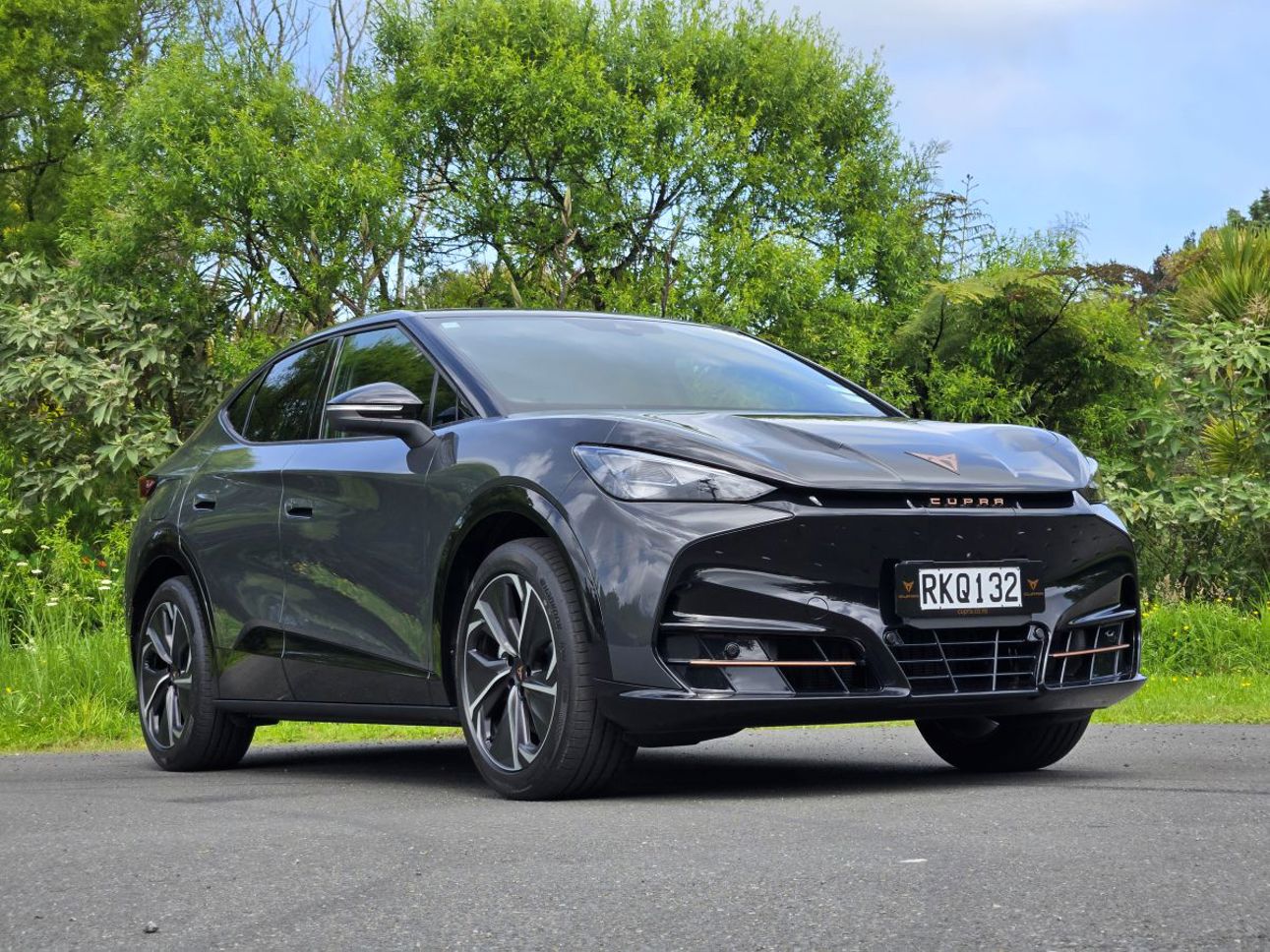
Fair enough, but based on our introductory drive we’re also really impressed with the V. It doesn’t have that much less power than the VZ, and while it doesn’t get the benefit of DCC, the smaller wheels and RWD achieve a great balance between compliance and sheer entertainment.
The V was an easier pitch when there was $20k between the two models. But Cupra's revised pricing means the VZ is now "only" another $10k. Still, give the V a try before you buy the faster one.
What other cars should I consider?
As we said, you can’t currently buy a VW ID.4 (the ID. 5 has been discontinued for good) or Skoda Enyaq. You can buy the just-updated Hyundai Ioniq 5 Series II and Kia EV6, starting at $79,990 and $83,070 respectively, so they’re in the frame. The BYD Sealion 7 ($67,990-$79,990). And of course the Tesla Model Y ($67,900-$100,900) is something of a hero model in this segment.
But Cupra also sees itself as an alternative to premium brands, so there’s the likes of the Audi Q4 e-tron (another MEB machine, starting at $103,990) or even the BMW iX2 ($92,900 and up).

